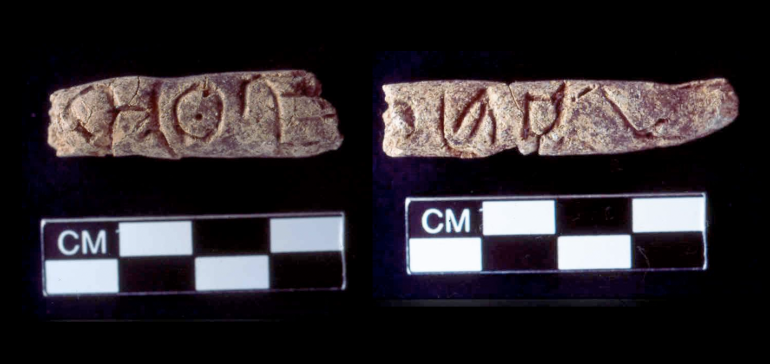(Clay, finger-sized objects with engravings or inscriptions. Image credit: Courtesy of Dr. Glenn Schwartz)
Rachel Wallach writes in her online article, “Alphabetic writing may have begun 500 years earlier than believed: Inside one archaeologist’s mission to rewrite the history of writing“, that archeologist Glenn Schwartz believes discoveries at Umm el-Mara in modern Syria may mean that the history of alphabetic writing may need to be updated:
“In 2010, archaeologist Glenn Schwartz quietly suggested that the history of writing needs, well, rewriting. More than a decade later, he still thinks he’s on to something. If he’s right, the world’s first fully developed alphabetic writing arrived on the scene some 500 years earlier than what archaeologists have long believed.”
Wallach gives the following background:
“…during a 2004 dig at the ancient city of Umm el-Marra, located in today’s northwestern Syria, Schwartz and his team unearthed four small clay objects that appeared to contain—after much close inspection—alphabetic writing. One reason for such scrutiny was that the objects were found in one of the site’s Early Bronze Age layers, dating to 2300 BCE—500 years before such writing was known.”
Wallach also notes (as does Chris Rollston in a post on the topic) that Schwartz did not come to this hypothesis quickly:
“Schwartz himself was highly skeptical at first, questioning whether the writing was truly alphabetic. But it is clearly not cuneiform, the known writing of the period. And while it bears some resemblance to Egyptian hieroglyphs, he says it bears far more resemblance to alphabetic Semitic. He also considered whether the objects could have appeared in the tomb from a later time period, but everything else there is easily dateable to the Early Bronze Age, he says. While it’s certainly not a definitive case for a rewriting of the history, Schwartz think it’s one worth serious investigation.”
Epigrapher Chris Rollston’s Thoughts:
Chris Rollston has posted his own insights into this question. As usual, he deals with the topic thoroughly and provides his own conclusions.
